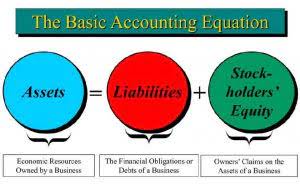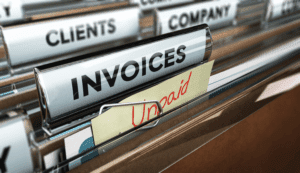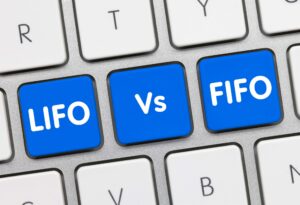
To use the dividend yield to compare two different stocks, consider two companies that pay a similar $4 annual dividend. A stock of Company A costs $95 per share, and a stock of Company B costs $165. In all, investors would likely begin by digging through a stock’s financial reports and earnings data, and then looking at its dividend yield.
Fringe Accounting: Components, Tax Implications, and Financial Impact
However, it is important to remember that not all companies pay dividends. Some companies may reinvest their profits back into the business instead of paying them out Law Firm Accounts Receivable Management to shareholders. Depending on the type of dividend, they’re usually distributed into an investor’s brokerage account in the form of cash or additional stock.

Time Value of Money
When a cash dividend is paid, the stock price generally drops by the amount of the dividend. For example, a company that pays a 2% cash dividend should experience a 2% decline in the price of its stock. Investors can view the total amount of dividends paid for the reporting period in the financing section of the statement of cash flows. The cash flow statement shows how much cash is entering or leaving a company. In the case of dividends paid, it would be listed as a use of cash for the period.
- To record a stock dividend, transfer from retained earnings to the capital stock and additional paid-in capital accounts an amount equal to the fair value of the additional shares issued.
- The total dividend liability is now 90,000, and the journal to record the declaration of dividend and the dividend payable would be as follows.
- Investors who do receive dividends should receive a tax form, a 1099-DIV, from the payor of the dividends if the annual payout is at least $10.
- For the shareholders, dividends represent a type of reward, mostly in cash, that the company pays them for their investment.
Ask a Financial Professional Any Question

Companies must maintain detailed transaction records to avoid financial misstatements or legal challenges. For international shareholders, exchange rate fluctuations must also be considered, as they can affect the actual amounts received. A company may issue a non-monetary dividend to investors, rather than making a cash or stock payment. Record this distribution at the fair market value of the assets distributed. Since the fair market value is likely to vary somewhat from the book value of the assets, the company will likely record the variance as a gain or loss. This accounting rule can sometimes lead a business to deliberately issue property dividends in order to alter their taxable and/or reported income.

For stock dividends, the process involves transferring a portion of retained earnings to common stock and additional paid-in capital accounts, depending on the size of the dividend. Small stock dividends (generally less than 20-25% of the existing shares) are recorded at market value, while larger stock dividends are recorded at par value. Dividend payments also influence key financial ratios, such as the dividend payout ratio and the return on equity (ROE).

Get in Touch With a Financial Advisor
- However, companies must manage potential share dilution, as an increase in outstanding shares can impact earnings per share (EPS) and shareholder value.
- There are three different types of dividend policies that companies can adopt, including constant, residual, and stable dividend policies.
- The specifics depend on the type of account that dividend-paying stocks are held in, among other things.
- Companies must also consider the requirements of its shareholders when calculating the dividends to pay out to their shareholders.
- Many investors look to buy stock in companies that pay dividends to generate a regular passive dividend income.
- It’s one of many 1099 forms, all of which report income outside of employee wages.
- Dividend accounting significantly influences corporate strategies and investor decisions.
As soon as the dividend has been declared, the liability needs to be recorded in the books of retained earnings balance sheet account as a dividend payable. The information herein is general and educational in nature and should not be considered legal or tax advice. Tax laws and regulations are complex and subject to change, which can materially impact investment results. Fidelity cannot guarantee that the information herein is accurate, complete, or timely. Consult an attorney or tax professional regarding your specific situation. (2) Telstra is an excellent choice for investors looking to bet on large-cap communication companies.
- A long term investor might be prepared to accept a lower dividend payout ratio in return for higher re-investment of profits and higher capital growth.
- In some jurisdictions, tax credits or deductions are available to mitigate the impact of double taxation.
- However, if you’re buying dividend-paying stocks to create a regular source of income, you might prefer cash.
- If a firm decides to switch from paying in cash to paying in stock, it might be a sign of trouble.
- He stated that by the time trends reach analysts on Wall Street, they would have missed out on most small-cap growth stocks.
- For the past 52 years, Harold Averkamp (CPA, MBA) hasworked as an accounting supervisor, manager, consultant, university instructor, and innovator in teaching accounting online.
However, due to the declaration of dividends, the company creates an obligation for itself to pay its shareholders. Dividends come in various forms, each with distinct characteristics and implications for both the issuing company and its shareholders. The primary types include cash dividends, stock dividends, and property dividends. On the dividend payment date, the cash is paid out to shareholders to settle the liability to them, and the dividends payable account balance returns to zero. Shareholders or investors looking to calculate the dividend that a company has paid in the past can use different methods to calculate it. For example, they can calculate the dividends of a company through the changes in its retained earnings.
COMPANY
For example, companies may choose to retain earnings and reinvest them in the business to defer taxes, rather than distributing them as dividends. Since shares of some companies can change hands quickly, the date of record marks a point in time to determine which individuals will receive the dividends. The Board’s declaration includes the date a shareholder must own stock to qualify for the payment along with the date the payments will be issued. However, if you’re buying dividend-paying stocks to create a regular source of income, you might prefer cash.
Dividend Declaration
The investors in such businesses are looking for a steady growth in the dividends. If you received more than $1,500 in dividends throughout the tax year, you likely need to complete a Schedule B, Interest and Ordinary Dividends. This form asks you to list all the companies that paid you dividends, and the amount you received from each one. Financial institutions are supposed to send out dividend account 1099-DIV forms by January 31 of the following tax year. That way, investors have plenty of time to prepare their tax returns by the tax-filing deadline in mid-April.